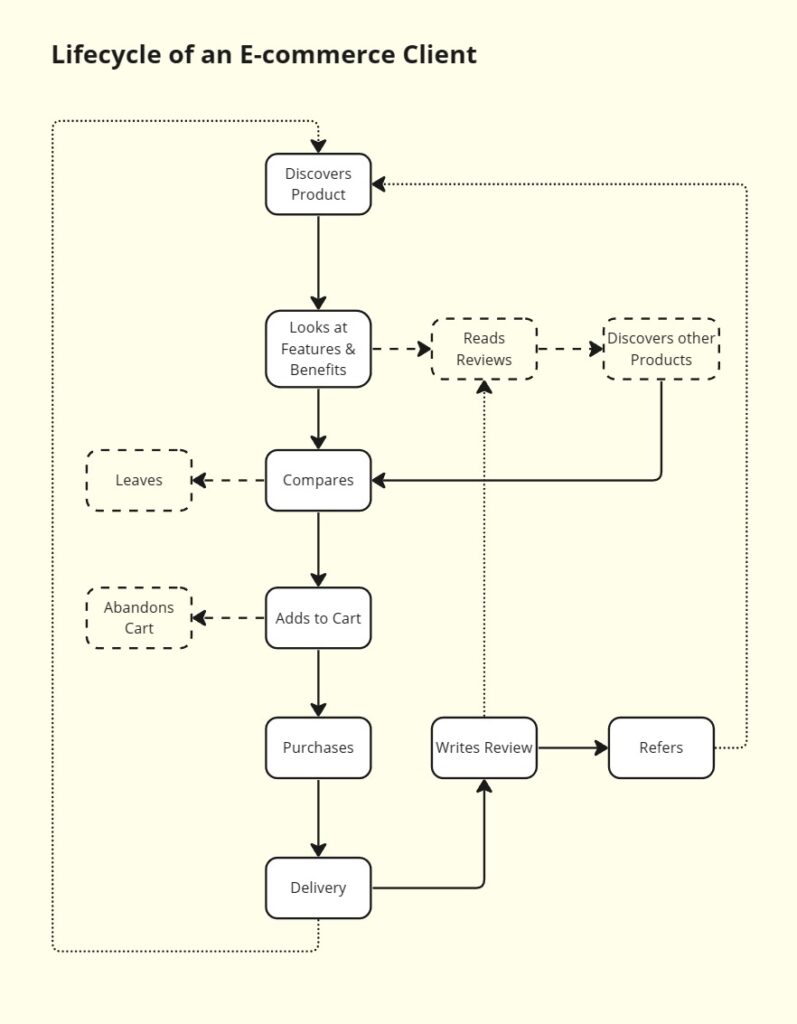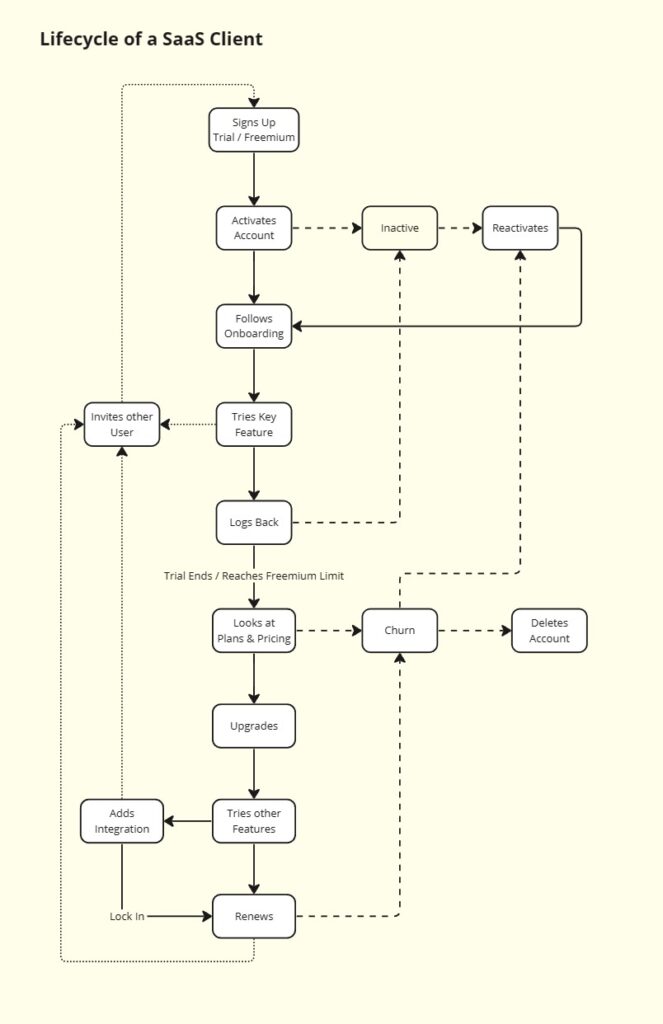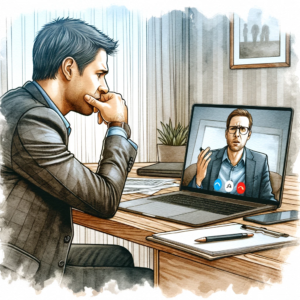For new companies, the first year is fraught with critical challenges: reaching the target audience effectively and managing financial resources efficiently are at the forefront.
The underlying issue often boils down to a fundamental gap: a lack of understanding of how to attract and retain customers effectively.
This is precisely why the concept of mapping your customer’s journey is indispensable. By delineating each phase of this journey, businesses can craft tailored experiences that attract prospects and convert them into loyal customers.
In essence, integrating a lifecycle marketing strategy that aligns with your customer’s journey and business objectives ensures that every interaction—be it in marketing, sales, product development, or customer service—is strategically guided towards fostering stronger customer relationships.
Through this comprehensive approach, businesses can ensure a seamless transition from prospect to advocate, laying a solid foundation for sustainable growth and success.
Let’s delve into how mapping this journey can transform your business, highlighting the role of CRM systems in capturing and leveraging customer data effectively.
Understanding the Customer Journey
The customer journey encompasses all a customer’s interactions with your brand, from initial awareness to post-purchase activities.
All customer journeys are unique. Two companies in the same industry with similar products can have very different journeys.
Let’s see an example of an e-commerce business:

- Awareness: The customer becomes aware of your brand and its products.
- Consideration: The customer evaluates your offerings against competitors.
- Purchase: The decision-making stage that ideally leads to a sale.
- Retention: Keeping the customer engaged to encourage repeat purchases.
- Delight: Satisfied customers recommend your brand to others.
Mapping these stages helps you identify touchpoints where you can influence the customer’s experience positively, leveraging opportunities to enhance engagement and conversion.
Now, let’s take a look at the customer journey of a SaaS company

The “Pirate Metrics,” developed by Dave McClure, is a framework designed to guide startups in driving growth through five key stages: Acquisition, Activation, Retention, Referral, and Revenue (often abbreviated as “AARRR”).
These metrics are crucial for understanding the customer lifecycle and optimizing the growth of a business.
- Acquisition: This stage focuses on how users find and come to the product or service. Key tactics involve various marketing channels such as social media, paid ads, SEO, etc.
- Activation: Once users arrive, the activation phase ensures they have a great first experience. It’s about making a good impression to increase the likelihood that first-time users will become active users.
- Retention: This metric tracks if users come back after their initial use. Retaining users is crucial as it indicates the long-term value of customers and helps in stabilizing the business model.
- Referral: Satisfied users are encouraged to refer new users, effectively turning them into a channel for acquisition. This stage leverages word-of-mouth and referral programs.
- Revenue: The final stage measures the user’s contribution to the business’s revenue. It assesses the effectiveness of monetization strategies and how well the business converts user engagement into earnings.
The Role of CRM in Lifecycle Marketing
A Customer Relationship Management (CRM) system is indispensable in today’s data-driven marketing environment and it should be a must in your tech stack for a lifecycle marketing strategy. Here’s how CRM can be utilized to enhance the customer journey:
- Data Collection: CRM systems gather data from various touchpoints, providing insights into customer preferences and behaviors.
- Customer Segmentation: This data allows for detailed segmentation, tailoring marketing to meet the specific needs and desires of different customer groups.
- Personalization: With segmentation, you can personalize communications and offers, making customers feel understood and valued.
- Tracking Progress: CRM helps you monitor where customers are in their journey, enabling timely interventions to nurture leads and convert opportunities.
Practical Steps to Map Your Customer’s Journey
- Collect Data: Use every interaction to gather as much information as possible. Analytics tools, customer feedback, and social media listening are excellent data sources.
- Create Buyer Personas: Develop detailed personas representing your customer segments. This helps in visualizing their needs, motivations, and potential objections.
- Identify Touchpoints: Recognize all possible customer interactions with your brand, both online and offline. Optimize these touchpoints to improve the customer experience.
- Implement Targeted Strategies: Use the insights gained to implement marketing strategies that address the specific requirements of each journey stage.
Elevating Your Customer Experience
Without a clear understanding of the customer journey, your marketing efforts may miss their mark, resulting in lost opportunities and customer churn.
Picture your business where every marketing move is informed by a deep understanding of the customer journey. This leads to increased engagement, higher conversion rates, and a growing base of loyal customers.
The bridge between these scenarios is the strategic mapping of your customer’s journey, enabled by a CRM system’s robust data and segmentation capabilities.
By thoroughly mapping the customer journey and leveraging CRM technology, any business can enhance its understanding of customer needs, improving both strategic decision-making and overall customer satisfaction. This approach optimises marketing investments and drives substantial growth by creating more personalized and effective customer experiences.


